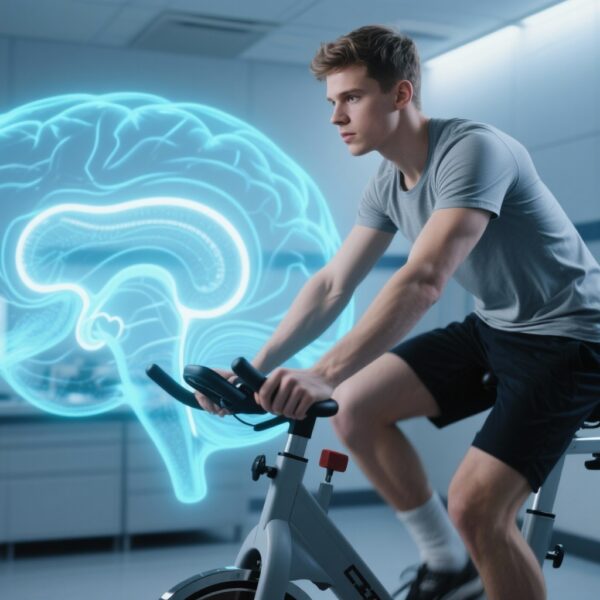Highlight
– In ENLIGHTEN, ANK3-positive patients with treatment‑resistant depression (TRD) randomized to liafensine (1 or 2 mg daily) had a statistically and clinically significant greater reduction in MADRS score at day 42 than placebo (mean difference −4.4 points, 95% CI −7.6 to −1.3; P = .006).
– This is the first prospective, randomized, biomarker‑guided clinical trial in psychiatry reporting successful enrichment of responders using a genetic marker (ANK3).
– Liafensine was generally well tolerated in this selected population; adverse event–related discontinuations were numerically lower in the active arms than placebo.
Background: Unmet need in treatment‑resistant depression and the promise of biomarkers
Major depressive disorder (MDD) causes substantial morbidity and mortality worldwide. A sizeable proportion of patients—commonly operationalized as those who fail one or more adequate antidepressant trials—meet criteria for treatment‑resistant depression (TRD). The STAR*D program demonstrated that subsequent treatment steps yield diminishing remission rates and prolonged morbidity, underscoring the need for novel therapeutics and for tools that predict response so patients can receive effective therapy sooner (Rush et al., 2006).
Precision psychiatry aims to move beyond a trial‑and‑error paradigm by integrating biomarkers to predict which patients will respond to which therapies. Genetic biomarkers are attractive because they are stable, measurable from peripheral tissue, and increasingly affordable to obtain. However, prospective biomarker‑guided randomized trials in psychiatry have been rare, and none had previously reported a prospectively validated genetic selection strategy for a novel antidepressant until the ENLIGHTEN trial.
Study design
The ENLIGHTEN trial (Wang et al., JAMA Psychiatry 2025; NCT05113771) is a randomized, double‑blind, placebo‑controlled, phase 2b study conducted at 58 sites (July 2022–March 2024) that prospectively enrolled patients with TRD who were ANK3‑positive. ANK3 was identified in prior retrospective analyses as a potential predictor of response to liafensine, a triple monoamine reuptake inhibitor (serotonin, norepinephrine, dopamine reuptake blockade).
From 1,967 patients screened, 189 ANK3‑positive patients were randomized 1:1:1 to once‑daily oral liafensine 1 mg, liafensine 2 mg, or placebo. Investigators, participants, raters, and sponsors were blinded to both ANK3 status and treatment allocation. The primary endpoint was change in Montgomery‑Åsberg Depression Rating Scale (MADRS) total score from baseline to day 42. Key exclusion criteria included specific psychiatric comorbidities, interacting medications, and significant organ dysfunction. Analysis was performed on the intent‑to‑treat population with at least one postbaseline efficacy assessment.
Key findings
Population: Of 189 randomized ANK3‑positive patients, 188 received study drug (mean age 43.2 years, SD 14.8; 63.3% female) and 186 had at least one postrandomization efficacy evaluation.
Primary efficacy
Combined liafensine (1 and 2 mg pooled) demonstrated a mean (SE) change in MADRS of −15.4 (0.9) compared with −11.0 (1.3) for placebo at day 42. The mean treatment difference was −4.4 points (95% CI −7.6 to −1.3), P = .006. This difference exceeds many consensus thresholds for a clinically meaningful group difference in MADRS in short randomized trials of pharmacologic antidepressants, although individual patient benefit varies.
Secondary endpoints
The investigators report statistically significant improvements across prespecified secondary endpoints, although the primary article should be consulted for specific measures (e.g., response and remission rates, functional scales). The consistency of effects across multiple outcome measures strengthens the primary finding.
Safety and tolerability
Liafensine was generally well tolerated in this ANK3‑positive cohort. Adverse events were described as tolerable with low rates of clinically meaningful events. Notably, discontinuations due to adverse events occurred in 5 patients (4.0%) receiving liafensine versus 9 patients (14.1%) receiving placebo. The lower discontinuation rate on active drug is unusual and may reflect chance, differential adverse event attribution, or other study‑specific factors; full safety tables and event types should be reviewed in the primary report.
Why ANK3 might be a relevant biomarker
ANK3 encodes ankyrin‑G, a scaffolding protein that organizes membrane proteins (including voltage‑gated sodium channels) at the axon initial segment and nodes of Ranvier, thereby influencing neuronal excitability and network function. Genome‑wide association studies previously implicated ANK3 in bipolar disorder and mood dysregulation (Ferreira et al., 2008), providing biologic plausibility that variation in ANK3 could modulate response to drugs that reorganize monoaminergic signaling. Triple reuptake inhibition by liafensine targets multiple monoamine systems (serotonin, norepinephrine, dopamine), which might interact with ANK3‑related neuronal phenotypes to produce differential clinical effects. Nonetheless, mechanistic links between specific ANK3 variants and liafensine response remain to be elucidated experimentally.
Expert commentary and interpretation
The ENLIGHTEN results, if robust and replicable, represent a milestone for precision psychiatry: a prospectively applied genetic marker that enriched for antidepressant responders in a randomized trial. Several strengths support the finding: randomized, double‑blind design; multicenter conduct; a clinically meaningful MADRS separation; and directionally consistent secondary outcomes.
However, caution is warranted. First, ANK3 was discovered as a retrospective predictor of response; although ENLIGHTEN prospectively applied the marker to select participants, the discovery‑to‑validation pathway is still limited and requires independent replication in different cohorts and across ancestries. Second, the sample size (n≈188 treated) is relatively modest for definitive biomarker validation; results should inform but not yet dictate widespread clinical adoption. Third, the trial tested only ANK3‑positive patients—efficacy in ANK3‑negative individuals is unknown; it is possible that liafensine could benefit some ANK3‑negative patients as well. Fourth, population genetics matter: allele frequencies and linkage disequilibrium patterns for ANK3 variants vary by ancestry, and the trial’s demographic breakdown should be examined to assess generalizability.
Methodological transparency will be crucial. Key details to scrutinize in the full publication or regulatory dossier include the specific ANK3 variants used to define positivity, genotyping method and quality control, statistical analysis plan (including handling of multiplicity for secondary endpoints), and complete safety tables. Independent replication—ideally in a randomized controlled trial that predefines the variant(s) and includes a broader, more diverse population—will determine whether the biomarker is robust for clinical deployment.
Clinical and regulatory implications
If confirmed, an ANK3‑guided approach to liafensine prescribing could accelerate symptom relief for a subset of patients with TRD and reduce exposure to ineffective treatments. For regulators and payers, prospective biomarker evidence is more compelling than post‑hoc associations and could support a companion diagnostic‑therapeutic pathway. Important implementation issues include: accessibility and cost of ANK3 testing, turnaround time compatible with clinical decision‑making, and demonstration of benefit across healthcare settings and diverse populations.
Limitations and unanswered questions
– The ANK3 predictor was discovered retrospectively; this raises the possibility of overfitting and the need for external validation.
– The trial enrolled only ANK3‑positive patients, so we lack a direct randomized comparison of liafensine efficacy by ANK3 status within the same protocol.
– Details of the secondary outcomes and dose‑specific efficacy (1 mg vs 2 mg) require examination in the full publication.
– Long‑term efficacy, relapse prevention, functional outcomes, and comprehensive safety profiling were not reported in the primary 42‑day analysis and will be important in later‑phase studies.
Next steps and research priorities
1) Replication: Conduct independent randomized trials that predefine ANK3 variants and include both ANK3‑positive and ‑negative participants to quantify predictive (biomarker-by-treatment) interaction.
2) Mechanistic studies: Map the functional consequences of the implicated ANK3 variants in neuronal systems and test how they influence monoaminergic signaling and response to triple reuptake inhibition.
3) Broader populations: Evaluate marker performance across ancestries and clinical subgroups of TRD to ensure equitable applicability.
4) Implementation science: Assess real‑world feasibility of ANK3 testing (turnaround, cost), clinician uptake, and health economic impact if used to guide liafensine prescribing.
Conclusion
The ENLIGHTEN trial reports that liafensine produced clinically meaningful and statistically significant improvements in depressive symptoms compared with placebo when ANK3 was used prospectively to select patients with TRD. This constitutes an important proof‑of‑concept for genetic biomarker‑guided psychiatry. The finding is promising but preliminary: replication, detailed mechanistic work, and confirmatory phase 3 data will be necessary before routine clinical adoption. If validated, ANK3‑guided liafensine could become a model for bringing precision medicine to mood disorders.
Funding and trial registration
Trial registration: ClinicalTrials.gov Identifier NCT05113771. Funding sources and sponsor details are reported in the primary publication (Wang et al., JAMA Psychiatry 2025) and should be consulted for disclosures and potential conflicts of interest.
References
1. Wang G, Aguado M, Spear MA, Alphs L, Chen C, Huang H, Lu XX, Doostzadeh J, Wu S, Wang S, Patel A, Nemeroff CB, Wang Z, Li A, Luo W. ANK3 as a Novel Genetic Biomarker for Liafensine in Treatment‑Resistant Depression: The ENLIGHTEN Randomized Clinical Trial. JAMA Psychiatry. 2025 Sep 10:e252416. doi: 10.1001/jamapsychiatry.2025.2416. Epub ahead of print. Erratum in: JAMA Psychiatry. 2025 Oct 29. doi: 10.1001/jamapsychiatry.2025.3382. PMID: 40928787; PMCID: PMC12423948.
2. Rush AJ, Trivedi MH, Wisniewski SR, et al.; STAR*D Study Team. Acute and longer‑term outcomes in depressed outpatients requiring one or several treatment steps: a STAR*D report. N Engl J Med. 2006 Mar 23;354(12):1231‑1244. doi:10.1056/NEJMoa052964.
3. Ferreira MA, O’Donovan MC, Meng YA, et al. Collaborative genome‑wide association analysis supports a role for ANK3 and CACNA1C in bipolar disorder. Nat Genet. 2008 Sep;40(9):1056‑1058. doi:10.1038/ng.209.



